Mold is a problem that can wreck havoc on your home and your health. With mold spores always naturally present in the air, a problem with toxic mold is always a possibility in a house. Which is why so many people are now wondering does activated charcoal kill mold?
Because, if it does, activated charcoal would be a cheap, easy and convenient answer to how to kill mold.
What is Activated Charcoal?
If you’re like me, when you think of activated charcoal, you think it’s just another type of charcoal briquette that is used for BBQ.
Nope.
Activated charcoal is way more complex than the stuff you use for picnics. Usually activated charcoal is made from burnt bamboo, but it can also be made from coconut shells or wood. Whatever is used, it is burned without oxygen. This makes it char. Then the char is treated with oxygen which creates tiny holes throughout the carbon char.
All of those tiny holes act like a sponge that air passes through. As air or a liquid goes through the activated charcoal, the potentially nasty chemicals and toxins in the air or liquid are grabbed and bind with the charcoal, essentially removing them from the air or liquid.
The natural ability of activated charcoal to bind with toxins and nasty chemicals makes it one of the ways to immediately treat poisoning. It is thought that ingesting activated charcoal immediately after poisoning or food poisoning helps to bind to the toxins and remove them from the body.
This is one of the reasons why activated charcoal is so often found in water filters. As water passes through the water filter, chemicals and toxins are trapped. It’s also why you need to change your water filter frequently. As the activated charcoal becomes full of toxins which bind to the charcoal, there is not any more room to filter out additional chemicals, pesticides, toxins and more.
In fact, these unique Japanese water filters are actually just sticks of activated charcoal. Unique, but they also work!
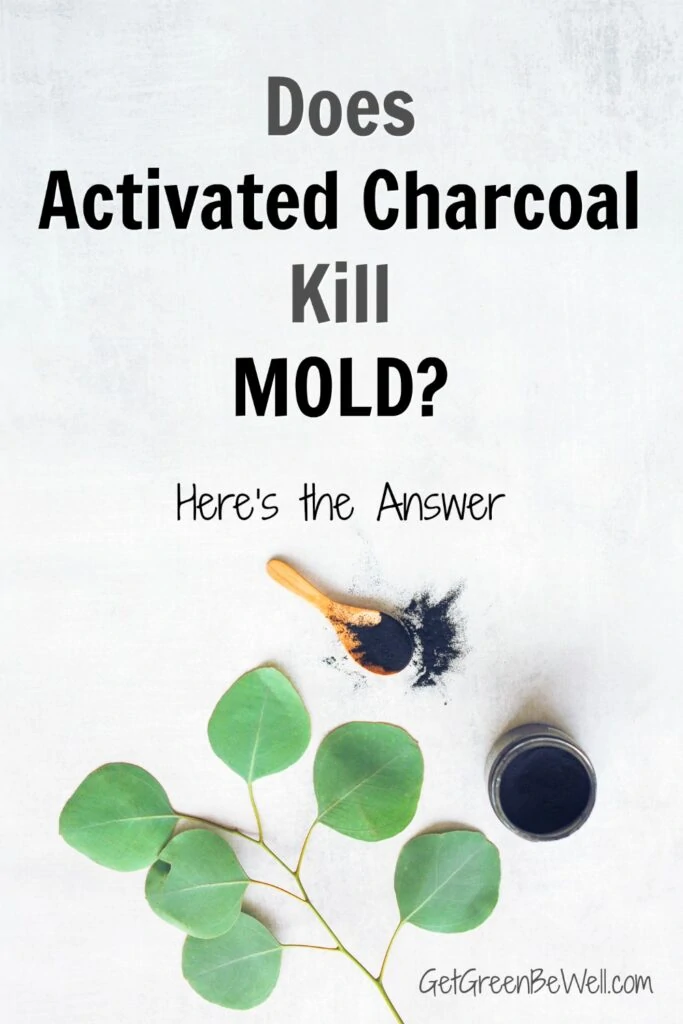
Activated Charcoal Supplements to Kill Mold
Most research about activated charcoal and mold focuses on ingesting the charcoal to kill mold-related disease and health problems.
In fact, there seems to be over 100 uses for using activated charcoal for health reasons. Many of them are highlighted in Activated Charcoal for Health. A majority of uses for activated charcoal involve beauty treatments, whitening teeth, removing toxins from the body and other natural cosmetic benefits.
Researching how activated charcoal kills mold, I came across many case studies of people using activated charcoal supplements to recover from a mold-related illness.
Knowing how sensitive a few members of my family are to mold, I can attest to the fact that this natural phenomenon can cause some very serious medical problems. And I’ve had medical problems, too, from mold that was unknowingly growing behind my bed that I didn’t know about.
It seems that activated charcoal doesn’t kill the mold itself, but kills the mycotoxins that the mold creates.
What are mycotoxins?
Mycotoxins are what mold produces. They are the cause of mold-related symptoms and problems from exposure.
So removing mycotoxins is a very good thing, even though ingesting activated charcoal doesn’t actually kill the mold.
Several people with mold-related illnesses have reported taking activated charcoal in their treatment to recover from mold exposure. Lindsay from Living Clean in a Dirty World used it instead of a pharmaceutical drug that also was designed to bind with mycotoxins. Mold Blogger talks about how to properly ingest activated charcoal after mold exposure.
I had the most amazing activated charcoal lemonade when I was in Charleston, SC. The color was pure black, but the taste was sweet. While I don’t know the cafe’s recipe, here’s a ready-made lemonade that you can buy. Many of us enjoyed the lemonade. Let’s just say that we ALL experienced some, um, noticeable detoxing effects a few hours later, if you know what I mean. So activated charcoal does have a detox effect, for sure!
It’s also great at detoxing your skin. Try my DIY Activated Charcoal and Bentonite Clay Detoxing Face Mask.
Can Activated Charcoal Kill Mold in Your House?
Honestly, I can’t find any medical research yet as to whether activated charcoal actually kills mold spores or whether it’s associated with killing mold because it absorbs moisture in the air.
But the use of activated charcoal to get rid of impurities stands the test of time. It’s been used since 3750 B.C. Since activated charcoal is the necessary ingredient in so many air filters and water filters, I personally feel confident using the natural remedy even though I can’t pinpoint an actual study that proves its effectiveness.
Did you know it’s estimated that there are between 10,000 – 300,000 different species of mold?
So perhaps using activated charcoal is more of a preventative measure in your home against so many types of mold, rather than the solution to kill the mold. Or is it?
Using Charcoal As a Mold Cleaner
First and foremost, I want to warn you about the potential dangers of disturbing mold. Disturbing mold (such as wiping it, chipping it off, cutting it out of drywall, etc.) releases spores into the air that can cause you even more problems. So this is a judgment call on your part. While activated charcoal will kill mold, you will still need to disturb the mold to kill it. All I will say is that personally, if I see mold growing at home in a small area, I would wear a mask designed for filtering out mold spores and try to clean it myself. Larger problems I would personally call a mold remediation specialist. Mold is a serious health threat that should not be taken lightly.
I had never thought about applying a paste of activated charcoal to mold to kill mold until I read Activated Charcoal for Health by Britt Brandon, CFNS, CPT. Brandon suggests that applying an activated charcoal paste directly to mold will help to fight existing mold while also preventing future growth.
The activated charcoal mold-fighting paste suggested by Brandon is:
- 1/2 cup activated charcoal powder
- 1 cup water
Mix together, apply to a moldy area, and let sit for 10-20 minutes before rinsing off.
I can see how this paste would work. But I also know how messy activated charcoal is from using it in facial masks (I love this Derma e Purifying Charcoal Face Mask, but boy is it messy!)
Apply activated charcoal only to places where you can rinse the paste off thoroughly. You might also want to do a test patch.
In my experience, activated charcoal can stain stuff a grey color. So be careful and mindful when using this natural mold cleaning paste.
More Ways to Use Activated Charcoal
Activated charcoal can be used in many other ways to kill or prevent mold growth in your home:
- I already highly suggest activated charcoal room deodorizers as one of the best ways to deodorize a closet naturally. That’s because the charcoal literally absorbs smells, toxins and moisture from the air.
- It’s also one of my favorite solutions of how to clean mold in a car. Adding activated charcoal bags or pillows in your car will absorb the moisture which can lead to mold growth.
- And activated charcoal is one of the best refrigerator deodorizers to keep nasty smells and odors out of your fridge.
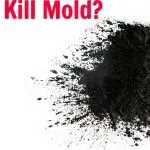
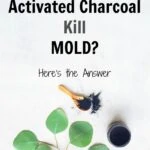
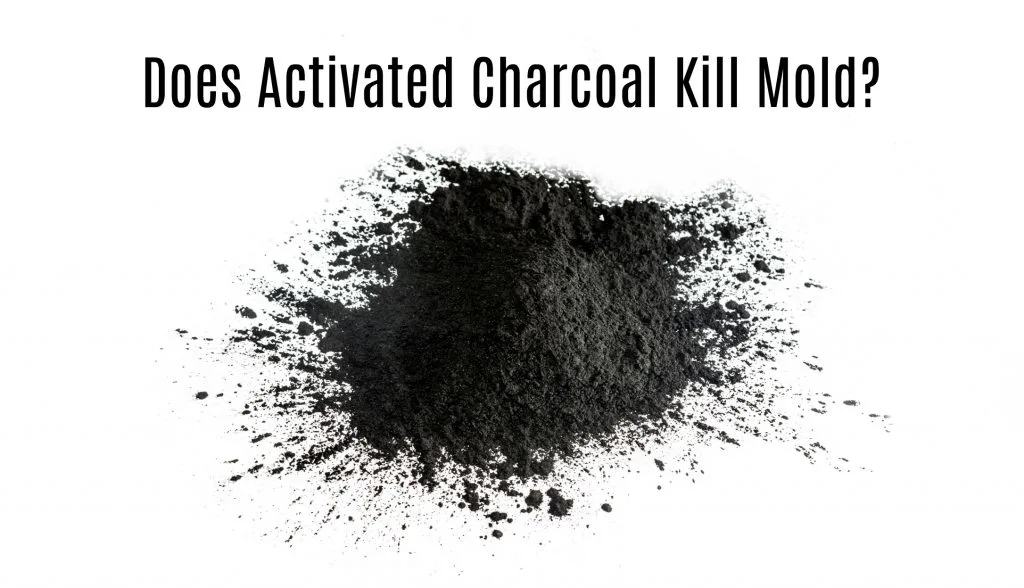
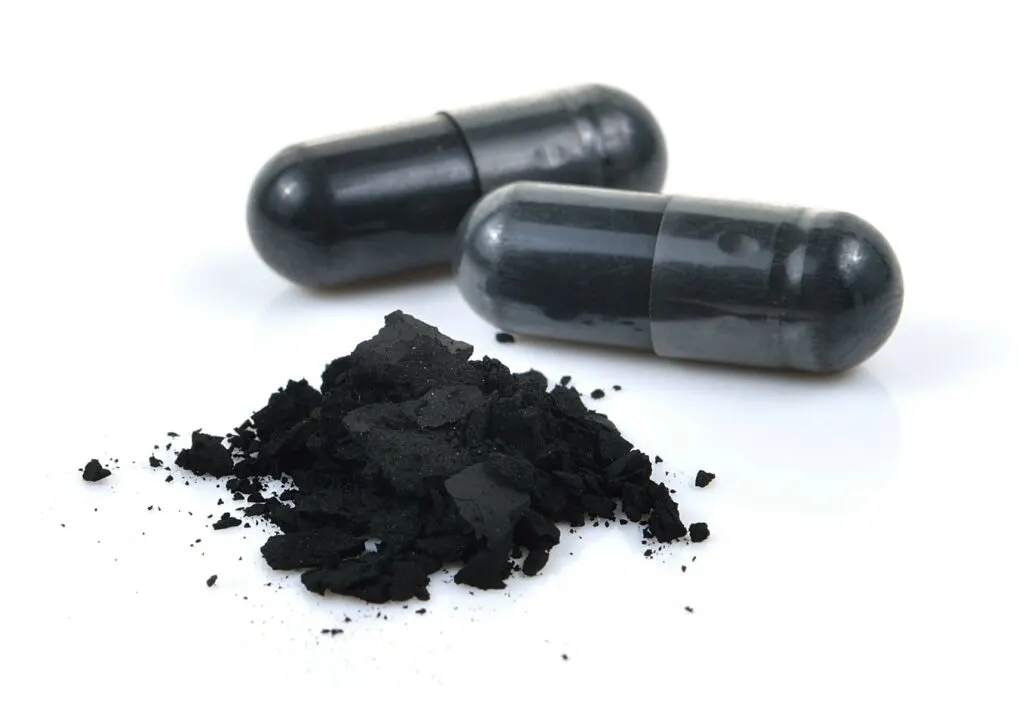
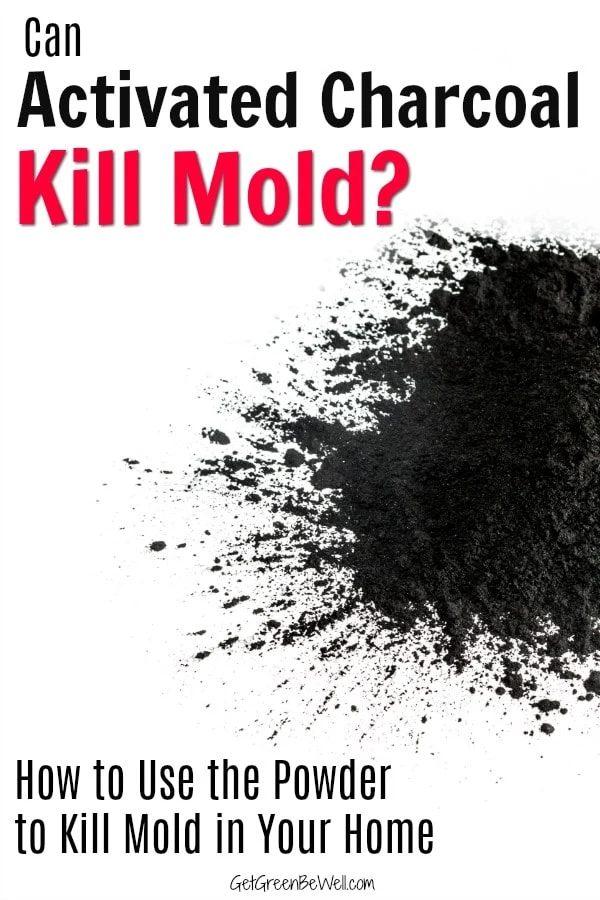
Chucky
Saturday 13th of February 2021
I never seen mold grow in a BBQ GRILL with burnt charcoal in it..does anybody in the entire world recall seeing mold growing inside a BBQ GRILL with burnt charcoal in it??? That right there would be the answer to the big scientific experiment...everybody on the entire world kindly come forward and tell us if you seen mold in a BBQ GRILL with burnt charcoal in it...
Jennifer
Monday 27th of July 2020
Happy to have found this? awesum cheers
kb
Tuesday 26th of May 2020
She did give a warning about disturbing mold. Didn't you read the whole thing before you made your comment? SMH!
Valerie
Tuesday 19th of May 2020
Where can I buy activated charcoal
Kimberly Button
Tuesday 19th of May 2020
You can buy it online. I have links in the article for buying it, or you can search online.
M
Saturday 16th of November 2019
Please consider putting a warning here. Disturbing mold (by cleaning) can set off mold spores which can land on your eyes, you could breathe it in, and worsen your mold exposure. If someone should set off to clean mold themselves they should wear appropriate gear: Mold specific safety mask, goggles, and Mold specific safety coveralls if also needed. Otherwise having a professional do it is best.
R. Scott Valentine
Tuesday 7th of January 2020
Agreed, this article offers very unsafe advice... if you have mold in your home get an expert to remove it and test yourself for mycotoxins. Mold is a serious illness and is affecting more and more people.